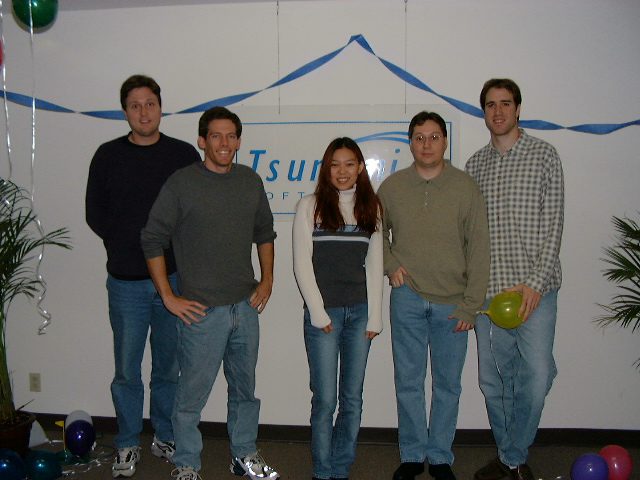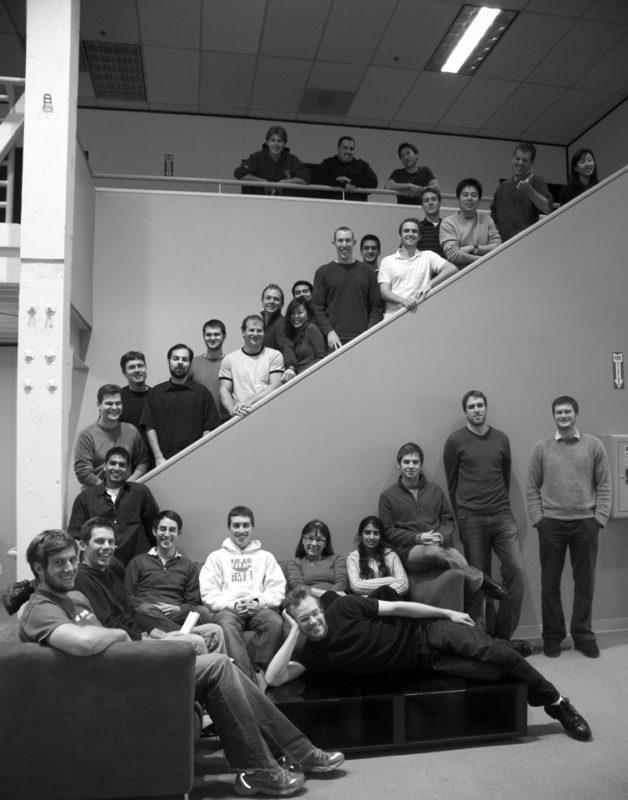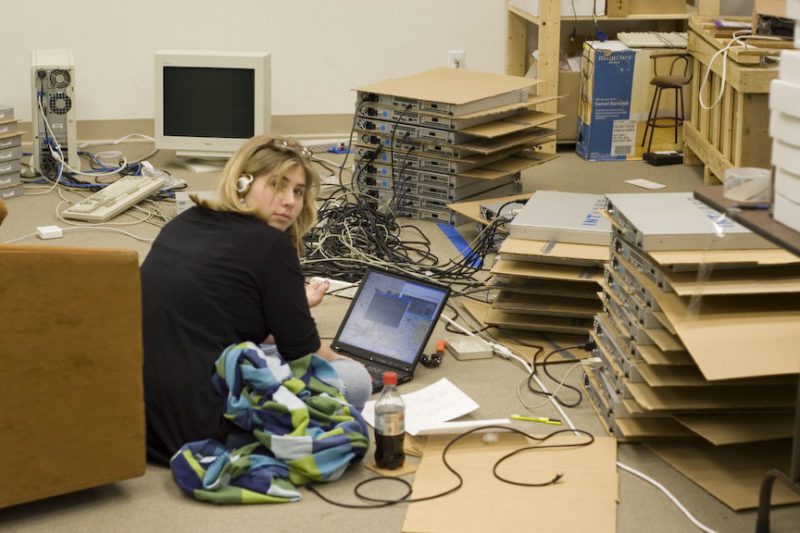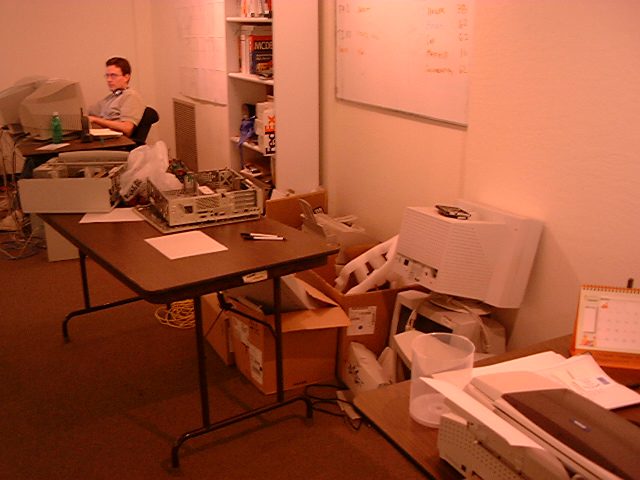Exciting things are on the horizon for our team at Intapp. We’ve experienced an action-packed year with acquisitions of new technologies from gwabbit and most recently, Intapp. Our products are evolving, as we introduce new capabilities, offer more cloud-based services, and employ technologies such as AI and machine learning that help today’s professional services firms compete, standout and succeed. But none of this would have been possible had it not been for some early success in our humble beginnings. In this post, we talk with Dan Harsell, Intapp’s co-founder and Senior Vice President of Technology about Intapp’s history including how and why the company was founded, its first customers, early-set culture, friendships and lots more.

Intapp: Can you talk about your current role at Intapp and how has it evolved since you co-founded the company?
Dan Harsell: In my current role, I lead a variety of efforts related to technology and engineering including our engineering and cloud operations teams. I also lead our technology foundation, which comprises the common services we’re starting to build out to make our platform interoperate. As well as our data science team, which works on machine learning and AI features in our products.
How has it evolved? Other than just being a bigger team than it was at the beginning, I would say in the early days, people like Thad Jampol, Tino Wuensche and myself were engineers who were building out the initial product. So, while we had given ourselves important-sounding VP titles, we were individual contributors creating the first generation of our integration product as engineers.

Intapp: What motivated you to start Intapp? What was the driving force behind your collective vision?
DH: While it isn’t true of Thad, the rest of the founding team was motivated by the fact that we found ourselves without jobs on the same day, as a result of the dotcom bubble that burst back in the early 2000’s. So, while that was one of the motivating factors, there’s a lot more to it than that. Many of the founding team had always had entrepreneurial aspirations. A few of the team had also had the shared experience of building bespoke software to integrate systems together. We had a vision on how that might work better than some of the tools that existed at the time.
Intapp: Did you view those integration needs as a gap in the market that paved the way for Intapp?
DH: Our view at the time was that the tools that existed back then were meant for really large organizations and required developers to operate them. And that’s what we were really aiming to do was to build something that could be used by a “citizen integrator” that would appeal to a very large audience. We intended the tool to be used by a very different user than the tools built for developers.
Intapp: How did Intapp start working with legal and professional services firms?
DH: Our intention in the beginning was to be like one of the modern integration platforms. In the end, we went in a different direction. We found that what we built in the early years had a lot of appeal to small businesses with IT teams that didn’t have as much forward-looking investment and that didn’t have a team of in-house developers. And by pure serendipity, our early adopter customer was a CIO at a law firm. We used that first customer to help us go to market – and we used it as a blueprint for selling into other law firms.
Over time, we gained a lot of momentum in the legal and professional services world. We started to accumulate more and more knowledge about law firms, how they operate, what their IT functions are, and what their particular needs are. And the momentum we gained helped keep us focused.
Intapp: Do you remember who that first customer was?
DH: I do. It was a law firm called Venture Law Group that no longer exists. It was an interesting artifact of the Silicon Valley dotcom era.
Intapp: What would you say was your most significant accomplishment in those early days? Was there one tipping point in the company’s history?
DH: Yeah, that’s a great one. It may be a fairly plain and obvious answer, but it took us a long time to get to the point where we had a sellable product and a go-to-market ability to sell the integration platform we had built. I remember it took us three or four years before we got to that point. Then there was the first sales quarter where we had a modest goal that seemed unachievable to me, and that we actually beat that goal by a lot. That was when I realized, “Oh, this is actually working. This is real now.”

Intapp: Can you talk about the culture and the camaraderie of the work environment in the early days?
DH: Absolutely. I can point to a few things that were the hallmarks of our culture. It definitely was tight-knit and there was a lot of camaraderie. Especially early on, the founding team and the earliest employees were a fairly young group (not by design), most of whom were not married and none of whom had children. So, you know, this was our life, this was our social group. Most days we would do things together, at least during the workday.
I think the other clear cultural trait was our frugality. That came out in a lot of ways such as in the kind of office space we occupied, supplying our own office chairs and other things that became running jokes for us.
Intapp: Any good life or business hacks that came out of that frugality?
DH: I think the most significant one was that in the early days of the company, we started out as a hardware business, and we were selling an appliance. And those appliances had to be assembled by hand ourselves so that we wouldn’t incur the added costs of a typical hardware manufacturer. So, that was probably the most important element of frugality. But you know, there were also other hallmarks such as the folding tables that were our desks and the BYO office chairs people supplied from their own homes.

Intapp: How do you think the culture has evolved over the years?
DH: In the early days, the things I just mentioned helped shape our culture such as our frugality and us as a team being less serious. But that has changed over the years. It’s definitely a real business now and it has become more serious. Part of that is because we have customers who are counting on us. Another part of it is that the group has matured. It’s probably true as well that we’re less frugal now, and that after having some success we can afford real office furniture (laughs).
In terms of the team, a fair number of Intapp’s leadership team has worked together for a very long time. We understand each other and have a lot of trust in each other. And that makes work enjoyable. So, that’s still there and that’s absolutely a part of what makes it a good experience for me and motivates me to keep going. But yeah, naturally, we’ve gotten to be a much larger company and that brings on a lot of change.
Intapp: What drives you personally?
DH: The thing that gets me motivated after all these years is to see the company keep growing, to see it change and evolve through different phases. And that I get to keep doing it with the people I’ve worked with for a long time and grown to trust. I think they’re really good at what they do, which makes me want to keep doing this.
Intapp: In three words, how would you describe Intapp at its inception? How would you describe Intapp now?
DH: At its inception: young, scrappy and open. I would say that now we are still scrappy and open. But we’re definitely not young anymore (laughs).
